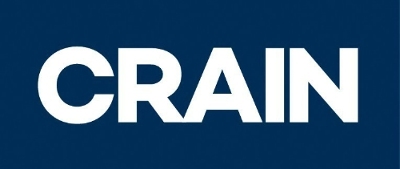Crain Commmunications’ Multi-phase Global Network Architecture Design and Upgrade
Crain Commmunications’ Multi-phase Global Network Architecture Design and Upgrade

Executive Summary
Crain Communication was ready for a network refresh and was looking to converge its voice, video and data into a state of the art network utilizing enterprise-level technology. Initially, Pro4ia was tasked with developing a relocation and infrastructure assessment; this quickly grew into a multi-phase global network architecture design and upgrade. Working with Pro4ia, Crain Communication’s network now has upgraded technology, a resilient dynamic network (including dynamic self-healing routing), VoIP-solutions, increased speed and performance in site-to-site connectivity and data center redundancy.
Company
Crain Communications is a leading publisher of more than 25 business and consumer publications and digital properties including Advertising Age, Automotive News, Adage.com, Crain’s New York Business and Autoweek. With nearly 850 employees in 13 offices in the United States, Germany and England, Crain’s is an internationally recognized force in global business media.
Background
For a large enterprise network, Crain Communication needed enterprise-level technology working for them. While Pro4ia was initially tasked with relocation and infrastructure assessment, a multi-phase national network upgrade has developed from the strategic partnership. Working with Pro4ia, Crain Communication’s network now has upgraded technology, a resilient dynamic network (including dynamic self-healing routing), VoIP-solutions, increased speed and performance in site-to-site connectivity and data center redundancy.
Addressing the Challenges
With a midtown office relocation into a 57,000 sq. ft. facility on the horizon and a new CIO’s fresh perspective, Crain Communications saw an opportunity. Chris Crain, a vice president and manager, remarked in an internal announcement that they were looking “to hit the refresh button”, emphasizing “design that will make our office a more collaborative environment and offer some more modern technology…”. Faced with a large relocation project, aging technology infrastructure, and a growing employee user-base critically dependent on up-to-the-minute information, Crain’s opened a competitive bidding process. Crain’s selected Pro4ia as a strategic technology partner to manage the relocation and assess Crain’s infrastructure needs.
Crain Communications is a worldwide leader in business media, which means that collaboration and communication are essential to its core operations. Moreover, collaboration and communication between branch sites and offices must be reliable, secure, and agile enough to suit strategic growth. Working with Crain’s new CIO, Anthony DiPonio, and his talented, in-house IT team, Pro4ia developed an Infrastructure Assessment and began work on the Physical Layer Design and Relocation. Continued support pre- and post-project fostered trust in Pro4ia as a technology services partner committed to exceeding Crain’s needs. When Pro4ia engaged Crain’s in opportunities for improvement, Anthony and his team listened, identifying additional needs and refinements.
Throughout the process, Pro4ia proactively targeted several key areas that needed addressing:
- Maladaptive legacy technology for site-to-site VPN’s (static routing)
- Non-enterprise level communications protocols (single-layer vs. multi-layer)
- Limited network failsafe (specifically MPLS circuit failsafe measures)
- Lack of Chicago & Detroit data center redundancies
Finding and Executing Solutions
“For a company like Crain’s, it changed the game.” – Sergio Deligiannis, Managing Partner at Pro4ia
Pro4ia’s reputation for project management led to Crain’s initial selection of Pro4ia to lead the infrastructure overhaul. This included drafting design specifications and infrastructure construction documents related to IT Infrastructure, Security, and A/V Systems that could meet or exceed Crain’s requirements.
After consulting with Pro4ia’s expert senior team members, Crain’s tasked Pro4ia with the design and implementation of Crain’s large enterprise-level Local Area Network and Wide Area Network. Upgrading and integrating legacy systems, establishing redundancy and resiliency in infrastructure, and optimizing communication protocols, became the core deliverables. Pro4ia’s emphasis on project management was the lynchpin that tied each initiative together, allowing calculated direction and native support at each step of implementation. On the technical side, Pro4ia wove a deft strategy to address Crain’s needs around its aging infrastructure & limited failsafe systems:
- Crain’s used an MPLS circuit to register phones to a hosted solution. Pro4ia asked: “What if that circuit fails? How do those phones stay up?” The answer is they did not.
- Pro4ia’s team built a Dynamic Multipoint VPN to replace the static routing that was previously used by Crain’s. Where Static routes require a specific and unchanging path, Dynamic routes find the best path between two VPN nodes adding resilience to the network—this creates what is called Dynamic Self-Healing Routing. Now, if anything should happen, data and phone traffic will dynamically re-route through an internet circuit that functions as a backup.
- A second major site now functions as a backup data center should the first fail.
- Communications technologies have been upgraded with better hardware and optimized protocols and performance.
Results
The ongoing partnership between Crain Communications and Pro4ia in this multi-phase project continues with the in-house team under the CIO’s leadership. The new office location for Crain’s New York was ready on time and on budget. Upgraded branch sites like New York and Akron now have peace of mind when accessing data and communications securely and reliably. Pro4ia dispatched teams to Detroit and Chicago to complete installation and configuration.
Crain Communications now has a National Network safeguarded against failure through resilient routing and redundant back-up systems.
Speed
- Branch offices have seen increased performance when accessing applications over the WAN. They are now on an MPLS network with site-to-site connectivity for the sites that have already been migrated. They will also experience similar performance if the MPLS link or network failed putting the network traffic on the DMVPN backup network,” says Nicholas Tsmisiris, Senior Network Architect at Pro4ia.
- This is the result of Enterprise Network Design which includes dynamic routing protocols that the Cisco hardware leverages to push packets faster through the pipes as well as quick dynamic self-healing (as a failsafe).
Resilience & Redundancy
- Should anything happen to the MPLS circuit at the Detroit location, phone traffic and data will re-route to the Chicago data center over the Dynamic Multipoint VPN then communicate to the hosted cloud site.
- Implemented a VoIP solution that utilizes this dynamic routing for stability and reliability
About Pro4ia
Pro4ia is a global technology services company, providing solutions and expertise as a trusted technology partner. Pro4ia applies its enterprise-level project management skills to core IT services so clients can achieve predictable and reliable results. Pro4ia’s headquarters is located in New York City’s Financial District, serving national and international clients. For more information, please explore our site.






